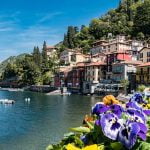Are you planning a trip to Italy and wondering, “Do I need a travel visa to visit Italy?” It’s essential to understand the visa requirements for your destination before embarking on your journey. Whether you are traveling for leisure, business, or any other purpose, knowing if you need a travel visa is crucial for a smooth and hassle-free experience.
Understanding the intricacies of travel visas is essential for international travelers. A travel visa is an official document issued by the country you plan to visit, allowing entry into their territory for a specific period and purpose. There are different types of visas, each serving distinct purposes such as tourism, business, study, or work.
When it comes to visiting Italy, there are specific visa requirements that travelers need to be aware of. This includes understanding the different types of visas available for various purposes and learning about the process for obtaining a visa. By having accurate information about these requirements, travelers can ensure they have all the necessary documentation before their trip.
In this blog post, we will delve into the details of travel visas for visiting Italy. We will discuss the various types of visas available and provide guidance on how to navigate through the application process. Additionally, we will explore any exemptions or special circumstances where a travel visa may not be required for visiting Italy. Stay tuned as we guide you through everything you need to know about travel visas for visiting Italy.
Understanding Visas
The answer depends on several factors, including your nationality and the purpose of your visit. Understanding what a travel visa is and the different types available is crucial when preparing for international travel.
There are various types of visas that one may need when traveling to Italy. These include tourist visas, business visas, student visas, work visas, and transit visas. Each type of visa serves a specific purpose and has its own set of requirements and conditions.
For example, a tourist visa is typically required for leisure travel or visits to family or friends in Italy. On the other hand, a business visa may be necessary if you are traveling to Italy for work-related activities such as attending meetings or conferences.
The purpose of a travel visa is to regulate the entry of foreign nationals into another country. It ensures that visitors meet certain criteria before being allowed entry and helps authorities keep track of who is entering their country.
When applying for a travel visa, individuals must provide information about their intended activities while in Italy and demonstrate that they will comply with the terms and conditions of their visa. Understanding these basics about travel visas is essential for anyone considering visiting Italy in order to avoid any issues related to documentation upon arrival.
| Information | Data |
|---|---|
| Visa Types | Tourist Visa, Business Visa, Student Visa, Work Visa, Transit Visa |
| Purpose | Regulate entry of foreign nationals; Ensure compliance with terms and conditions; Keep track of visitors |
Visa Requirements for Italy
Italy is a popular tourist destination, known for its rich history, stunning architecture, and delectable cuisine. For travelers planning a trip to Italy, it is crucial to understand the visa requirements before embarking on their journey. This section will provide an in-depth look at the specific visa requirements for visiting Italy, including the different types of visas available and the process for obtaining a visa.
Types of Visas
When it comes to visiting Italy, there are different types of visas that may be applicable depending on the purpose of travel. The most common types of visas include tourist visas, business visas, student visas, and work visas. Tourist visas are typically suitable for individuals planning to visit Italy for leisure and sightseeing purposes. On the other hand, business visas are intended for those traveling to Italy for work-related activities or meetings.
Visa Application Process
The process for obtaining a visa to visit Italy involves several steps. First and foremost, applicants must determine the type of visa they need based on their purpose of travel. Following this, individuals are required to complete an application form and gather necessary supporting documents such as a valid passport, proof of accommodation in Italy, travel itinerary, financial means to support their stay in Italy, and travel insurance.
Do I Need a Travel Visa to Visit Italy?
As with any international travel destination, it is essential to research whether a travel visa is required before planning a trip to Italy. Citizens of certain countries may be exempt from obtaining a visa for short-term visits based on bilateral agreements or visa waiver programs. However, it is important to verify specific visa requirements based on citizenship status and purpose of visit when planning a trip to Italy.
Visa Exemptions
Another visa exemption for visiting Italy applies to citizens of certain countries that have reciprocal agreements with Italy. These agreements may allow citizens of these countries to enter Italy for short stays without needing a travel visa. However, it is essential to research and confirm whether your specific nationality is eligible for this exemption before traveling.
In addition, individuals who are transit passengers passing through an Italian airport on their way to another destination may also be exempt from needing a travel visa, depending on their nationality and the duration of their layover in Italy. It is crucial to check the specific requirements and regulations in place for transit passengers before making any travel arrangements.
Lastly, those visiting Italy on diplomatic or official business may also be exempt from requiring a travel visa, depending on their status and purpose of travel. It is essential for individuals traveling under these circumstances to consult with the relevant Italian authorities or embassies well in advance of their trip to ensure they meet all necessary requirements for visa exemption.
| Visa Exemptions | Description |
|---|---|
| Citizens of EU/Schengen Area | Not required to obtain a travel visa for short stays |
| Reciprocal Agreements | Citizens from certain countries may not need a travel visa |
| Transit Passengers | May be exempt from needing a travel visa based on nationality and layover duration |
Applying for a Visa
When planning a trip to Italy, it is crucial to determine whether a travel visa is required for your visit. Understanding the process of applying for a visa, knowing the necessary documents, and being aware of any potential fees associated with the application can help ensure a smooth and hassle-free travel experience. Below is a step-by-step guide on how to apply for a travel visa to Italy:
Step 1: Determine the Type of Visa
Before applying for a travel visa to Italy, it is important to determine the type of visa that best suits your purpose of visit. Whether you are traveling for tourism, business, or other reasons, there are different types of visas available. It is essential to select the appropriate visa category when starting the application process.
Step 2: Gather Necessary Documents
Once you have identified the type of visa needed for your trip to Italy, gather all the necessary documents required for the application. This may include a completed visa application form, a valid passport, passport-sized photos, travel itinerary, proof of accommodation arrangements, proof of financial means to cover expenses during your stay in Italy, and any additional documents specific to your purpose of visit.
Step 3: Submitting Your Application
After gathering all the required documents, it is time to submit your visa application. Depending on your location, you may need to schedule an appointment at the Italian consulate or embassy in your country. During this appointment, you will submit your application form and supporting documents.
Step 4: Paying Visa Fees
As part of the visa application process, there may be associated fees that need to be paid. These fees can vary depending on the type of visa and your nationality. Be sure to inquire about any applicable fees and payment methods when submitting your application.
By following these step-by-step guidelines for applying for a travel visa to Italy and providing all necessary documentation accurately and promptly, you can increase your chances of obtaining a visa successfully. Planning ahead and adhering to the requirements will help ensure that you have everything in place before embarking on your Italian adventure.
Visa Processing Time
When planning a trip to Italy, it is crucial to consider the processing time for obtaining a travel visa. Understanding the typical timeframe for visa processing and applying well in advance can make the difference between a smooth travel experience and last-minute complications.
Typical Processing Time
The processing time for a travel visa to Italy can vary depending on various factors such as the type of visa being applied for, the volume of applications being processed, and any additional requirements or documents needed for the visa application. In general, it is advisable to allow for a minimum of 4-6 weeks for visa processing, although it may take longer during peak travel seasons or in special circumstances.
Applying Well in Advance
It is highly recommended to apply for a travel visa to Italy well in advance of your planned travel dates. This allows ample time for the application to be processed, any additional documentation to be provided if requested, and for any potential delays that may occur during the visa process. Waiting until the last minute to apply for a visa can result in added stress and may jeopardize your travel plans if there are unexpected delays in processing.
Importance of Planning Ahead
By understanding the typical processing time for a travel visa to Italy and applying well in advance, travelers can avoid unnecessary stress and ensure they have all necessary documentation in order before their trip. Planning ahead also provides peace of mind and allows travelers to focus on other aspects of their trip preparation.
It is always better to be proactive when it comes to obtaining a travel visa, as this will contribute to a smoother and more enjoyable travel experience overall.
Tips for a Smooth Visa Application
When applying for a travel visa to visit Italy, it is important to ensure a smooth and successful application process. To help you navigate through the visa application, here are some helpful tips and recommendations:
1. Research Visa Requirements: Before starting your visa application, it is essential to thoroughly research the specific visa requirements for visiting Italy. Depending on your nationality and the purpose of your visit, you may require different types of visas such as a Schengen tourist visa or a student visa. Knowing the exact requirements will prevent any delays or complications in the application process.
2. Prepare Required Documents: Once you understand the visa requirements, gather all the necessary documents for your application. This may include a valid passport, completed visa application form, passport-sized photographs, proof of financial means, travel itinerary, and other supporting documents depending on the type of visa you are applying for. Ensuring that all required documents are complete and organized will contribute to a smooth application process.
3. Avoid Common Mistakes: When completing your visa application form and preparing your documents, be mindful of common mistakes that can lead to delays or even rejection of your visa. Double-check all information provided on the application form for accuracy and consistency with supporting documents. Additionally, make sure to submit all required documents as missing or incomplete paperwork can result in your application being denied.
4. Seek Assistance if Needed: If you encounter any challenges during the visa application process or have specific questions regarding your application, consider seeking assistance from reliable resources. You can contact the Italian embassy or consulate in your country for guidance and clarification on visa requirements. Alternatively, there are professional services available that specialize in assisting individuals with their visa applications.
By following these tips and recommendations, you can maximize your chances of a successful visa application for visiting Italy without any unnecessary hurdles or complications along the way.
Conclusion
In conclusion, it is essential for anyone planning to visit Italy to understand the visa requirements to ensure a hassle-free travel experience. Knowing whether or not you need a travel visa to visit Italy can save you time, money, and potential stress when preparing for your trip. By researching the specific visa requirements for Italy and understanding the various types of visas available, travelers can confidently navigate the visa application process.
Additionally, familiarizing yourself with the potential exemptions or special circumstances where a travel visa may not be required for visiting Italy is crucial. This knowledge can help travelers determine if they are eligible for any exemptions and streamline the visa application process. By following this blog post’s detailed information regarding the types of visas available, the application process, necessary documents, and potential fees associated with obtaining a travel visa to Italy, readers can prepare themselves effectively for their trip.
By equipping themselves with comprehensive knowledge about travel visas and understanding how to successfully obtain the necessary documentation for visiting Italy, travelers can set themselves up for a seamless journey. Ultimately, being well-informed about visa requirements will contribute to a stress-free and enjoyable travel experience in one of Europe’s most captivating destinations.
So if you’re asking yourself “Do I need a travel visa to visit Italy? “, make sure to conduct thorough research and start planning well in advance of your trip.
Frequently Asked Questions
Do U.S. Citizens Need Visa to Visit Italy?
Yes, U.S. citizens need a visa to visit Italy. The type of visa required will depend on the purpose of the visit, such as tourism, business, or study. It’s important to check with the Italian consulate for specific requirements.
Do I Need a Visa When Travelling to Italy?
Whether or not you need a visa when traveling to Italy depends on your nationality and the purpose of your visit. For example, citizens from countries within the Schengen Area do not need a visa if their stay is up to 90 days. It’s important to check the specific requirements based on your situation.
Which Countries Can Enter Italy Without Visa?
Citizens from certain countries can enter Italy without a visa for short stays (up to 90 days) for purposes such as tourism, visiting family or friends, or business trips. These countries include the United States, Canada, Australia, and Japan among others. However, it’s crucial to verify this information since visa exemption policies can change over time.

I’m a passionate traveler, writer, and Italophile. My fascination with Italy’s history, art, and culture has led me on countless adventures across the Italian landscape. Through “I Live Italy,” I share my love for this extraordinary country and aims to inspire others to explore its boundless beauty.





